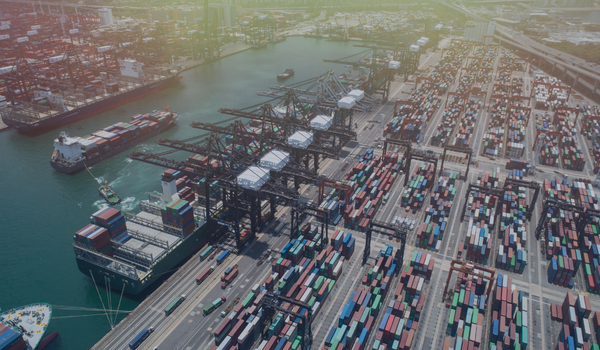According to Bloomberg news, the COVID-19 pandemic caused consumer demand to increase by more than 15% compared to two years ago. This created supply chain issues as businesses were forced to halt operations to slow the spread of the virus and prioritize employee health and safety measures. As life has begun to normalize, consumer demand has continued to explode, further causing bottlenecks throughout the global supply chain.
This article discusses the factors that contribute to the supply chain issue, how businesses can minimize vulnerabilities, and the different types of insurance that could cover supply chain-related claims.
Factors Contributing to the Supply Chain Issues
Supply chains rely on people and equipment. Delays and cost increases occur when there is a shortage of either. Supply chain disruptions not only create higher prices and scarcity among high-end consumer products, they also affect basic commodities, such as generic drugs or energy, increasing the cost of living. A disruption to the supply chain can be caused by any one of the following reasons:
- COVID-19—A disruption of the supply chain can occur any time there is a mismatch between supply and demand. The COVID-19 pandemic caused such a mismatch as consumer demand increased and factories were forced to suspend production.
- Cyber Risk—The COVID-19 pandemic forced businesses to accelerate their transition to digital operations. As a result, more critical data is shared in far-reaching global supply chains. A cyberattack can cause operational, financial, and reputational damages that cannot be easily recovered or repaired.
- Port Backlog—Ocean-shipped goods accumulate faster than workers can move them, leading to backlogs and increased shipping costs.
- Truck Driver Shortage—According to the American Trucking Associations, there are an estimated 80,000 unfilled truck driving jobs in the United States. The driver shortage means that goods backlogged in ports and elsewhere can’t be moved.
- Natural Disasters—Hurricanes, floods, blizzards, and any natural disaster can disrupt global supply chains by interrupting deliveries, closing ports, and canceling cargo flights.
- Production Issues—The supply chain can be disrupted if factories have to close amid increasing demand. For example, the global chip shortage affected auto, gaming, smartphone, and medical device manufacturing as well as other technology that requires semiconductors.
Supply chain disruptions can cause business operations to become more expensive to maintain. Stakeholder expectations for profit and sustainability may not be met during a supply chain crisis. Businesses need to plan in advance in order to be prepared to mitigate supply chain issues for the benefit of both customers and stakeholders.
Minimizing Vulnerabilities
Businesses can limit their exposure to supply chain disruptions by taking the following actions:
- Diversify supplier base. A business with a single supplier is more susceptible to supply chain disruptions. Having a diverse supplier base disperses the risk and reduces the impact if one supplier is unable to deliver its goods.
- Prepare a risk management plan. Identify and assess all current and potential risks that could disrupt business supply chains. Prepare procedures and responses for risks and build flexibility into business processes to adapt to disruptions.
- Aim for end-to-end supply chain visibility. Supply chains typically involve many operational stages, each with its own risks and challenges. Supply chain visibility can help mitigate risks by tracking progress and ensuring quick responses to any issues.
- Invest in cybersecurity. Some of the most common risks that affect supply chains include data leaks, breaches, and malware attacks. Businesses should assess and improve current cybersecurity measures to mitigate supply chain risks.
- Purchase coverage. Specialty insurance policies can help businesses recover in the event of a supply chain crisis.
Insurance Solutions
Managing supply chain risks can be difficult since the risk factors tend to be complex. The following are insurance policies that may respond to supply chain disruptions:
- Contingent Business Interruption (CBI) Insurance—CBI insurance provides financial relief when a significant partner, supplier or manufacturer suffers a property loss large enough to negatively impact a business’s ability to operate. This type of insurance is generally triggered by physical property damage, such as a fire or flood, that halts supplier
- Extra Expense Coverage—Extra expense coverage is in excess of normal operating expenses that an organization incurs to continue operations after major disruption. Extra expense applies to the period of time between when a business is forced to close temporarily and when it has been restored to normal operation.
- Broader Supply Chain Coverage—Supply chain insurance is designed to provide more comprehensive coverage than CBI insurance. While there is no “standard” supply chain insurance policy form, this type of coverage can be customized to cover losses caused by a wide range of events, including:
-
- Natural disasters
- Industrial accidents
- Labor issues
- Production process problems
- Political upheaval, war, civil strife, riots, or other disruptive civic action
- Road, bridge, and other transportation infrastructure closures
- Public health emergencies
- Regulatory action
- Financial issues
-
Conclusion
Once a supply chain issue arises, there is no way of knowing when it will end. Businesses need to be proactive in identifying and preventing supply chain disruptions before they occur and obtaining the right insurance coverage to protect them if they can’t. For more information, contact an RMC Insurance Agent today to see how we can help you. Our office can be reached at 239-298-8210 or rmc@rmcgp.com.
This article is not intended to be exhaustive, nor should any discussion or opinions be construed as legal advice. Readers should contact legal counsel or an insurance professional for appropriate advice. © 2022 Zywave, Inc. All rights reserved.



